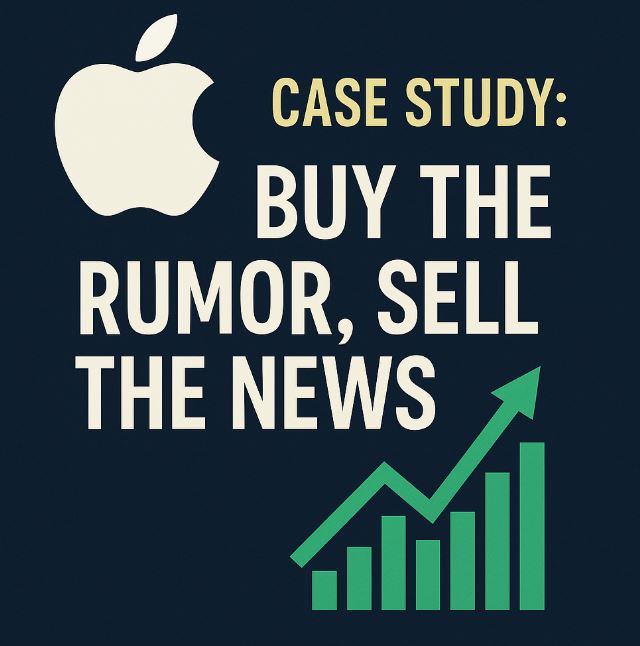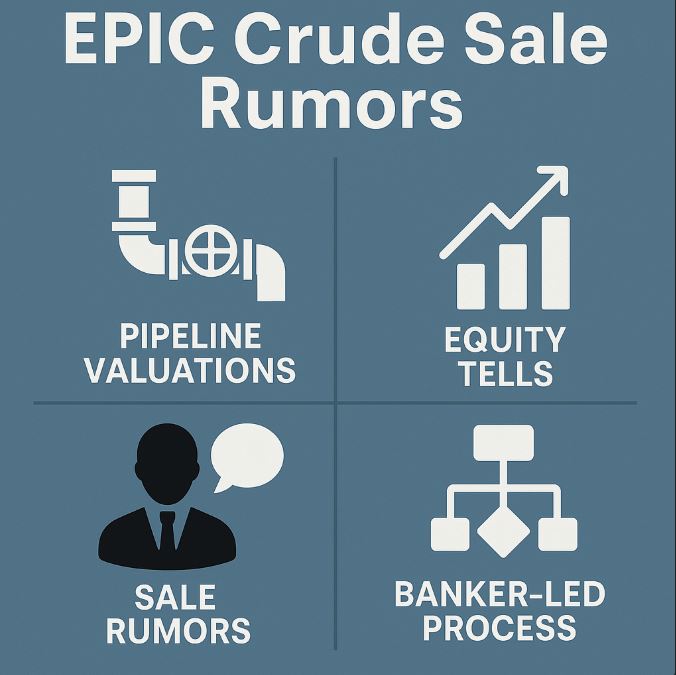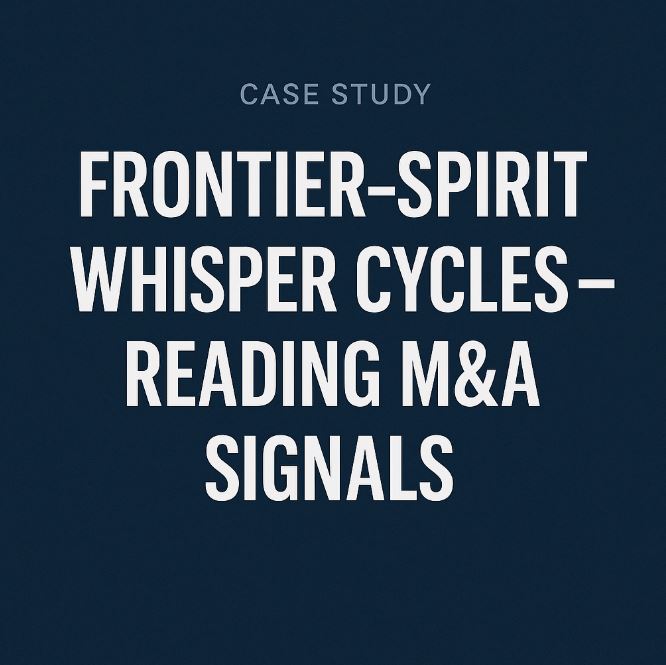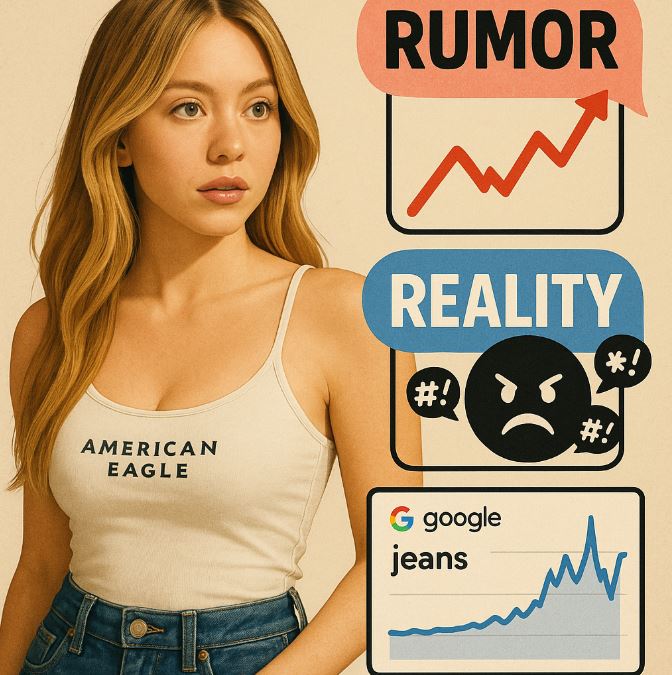
Why does Apple stock so often run up before product launches — and then stall or drop the moment Tim Cook walks off stage? This case study shows how Apple has become the ultimate example of the market adage: buy the rumor, sell the news.
Executive Summary
“Buy the rumor, sell the news” describes how stocks rise during anticipation of good news, then fade once the news is confirmed. Traders who positioned early lock in profits, while latecomers are left holding shares just as momentum cools.
Apple Inc. (AAPL) is the perfect testing ground for this strategy. Its predictable product cycle, constant leaks, and global hype create recurring opportunities. This post breaks down the psychology, phases of the trade, and real examples from iPhones, the Vision Pro, and the M1 chip.
1. The Psychology Behind Apple Rumor Trades
- Anticipation > Reality: Traders buy the dream of the “next big thing.” Reality rarely matches the hype.
- Rumor Mill: Analysts like Ming-Chi Kuo (MacRumors) and supply-chain leaks fuel speculation months in advance.
- Uncertainty as a Catalyst: The unknown drives speculation; the keynote removes the mystery.
- Smart Money Liquidity Event: Institutions often sell into retail enthusiasm on event day.
Takeaway: The power of imagination often outweighs the actual news.
2. The Three Phases of an Apple Product Cycle Trade
Phase 1: Buy the Rumor (3–6 Months Pre-Launch)
- Subtle leaks from suppliers (Bloomberg Apple supply chain coverage)
- Gradual stock climb + rising call option activity
- Early investors accumulate shares before hype goes mainstream
Trader lesson: Build small positions early, when chatter starts but retail hasn’t piled in.
Phase 2: The Crescendo (2–4 Weeks Pre-Launch)
- Apple event invites confirmed
- Stock accelerates, sometimes overbought on RSI
- Options IV spikes as event approaches
Trader lesson: Great time to trim profits or hedge with options.
Phase 3: Sell the News (Launch Day + Aftermath)
- Announcement is usually what was already expected
- Stock flatlines or dips even if product is strong
- Options suffer “IV crush” immediately after keynote
Trader lesson: Be ready to exit quickly — or sit out the froth entirely.
3. Historical Apple Case Studies
Case Study A: iPhone 12 and the 5G “Supercycle” (2020)
- Rumor: First 5G iPhone → huge upgrade cycle.
- Run-up: Stock rose 75% (June–Sept 2020).
- Event (Oct 13): iPhone 12 announced with 5G.
- Aftermath: Stock fell 2.65% that day and drifted sideways.
👉 Lesson: Hype was fully priced in.
(Source: CNBC coverage)
Case Study B: Apple Vision Pro (2023)
- Rumor: First mixed-reality headset — Apple’s “next iPhone moment.”
- Run-up: Stock climbed ~15% ahead of WWDC.
- Event (June 5, 2023): Vision Pro revealed at $3,499.
- Aftermath: Stock peaked that day, then pulled back.
👉 Lesson: Reality (expensive niche product) couldn’t match rumor’s magic.
(Source: The Verge)
Case Study C: The M1 Chip (2020) — The Exception
- Rumor: Apple Silicon would improve Macs modestly.
- Event (Nov 10, 2020): M1 chip unveiled → performance exceeded expectations by 2x–3x.
- Aftermath: Stock rallied further, creating a fresh bull case.
👉 Lesson: “Sell the news” fails if the news blows expectations away.
(Source: Ars Technica)
4. Risks and Considerations
- Rumor Wrong: Feature doesn’t materialize → stock tanks pre-event.
- News Disappoints: Classic post-event dump.
- Blowout News: Rare events like the M1 chip reset expectations.
- Macro Factors: Fed decisions or geopolitical shocks can override Apple-specific cycles.
Conclusion
Apple remains the gold standard for rumor-driven trades. Its product cycles create repeating opportunities to study — and sometimes profit from — the “buy the rumor, sell the news” effect.
For traders, the lesson is clear:
- The run-up is about anticipation, not fundamentals.
- The keynote is a profit-taking event, not a buying opportunity.
- Only when news dramatically exceeds expectations does the cycle break.
Final Word: Trading Apple rumors can be profitable, but only if you respect the risks, set clear entry/exit plans, and remember: you’re trading psychology, not just products.



